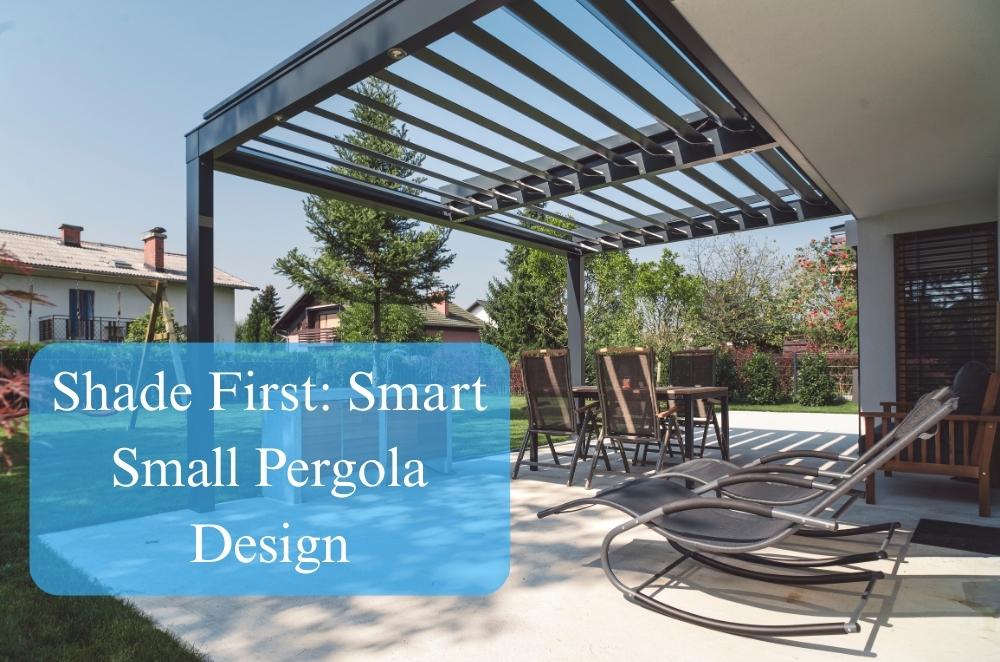Shade First: Smart Small Pergola Design

Small outdoor areas can feel hot, exposed, and underused—especially when summer light hits hard and wind funnels between fences. A compact pergola changes that story by shaping shade, guiding breezes, and creating a calm anchor for daily life. If you’re mapping options, browsing a small pergola range helps you compare roof types, spans and finishes that work in tight footprints. The aim isn’t to overbuild; it’s to get the fundamentals right so the space works most days without fuss. I’ve seen modest frames turn awkward corners into dependable spots for breakfast, emails, or a quiet chat after dinner—proof that proportion and shade matter more than size.
Read the space before you draw lines
A quick site read sets the design up for fewer surprises later. You’re looking for how light lands, where heat lingers, and how people actually move through the yard.
-
Sun path: Track mid-morning to late-afternoon angles so roof slats or battens intercept heat when it bites.
-
Prevailing breeze: Note summer winds and sheltered eddies to vent warm air without creating gusts.
-
Sightlines: Protect privacy while keeping key views and daylight to nearby windows.
-
Flow and clearance: Leave walk-through room and door swing space so the area stays effortless.
Those notes become the rules of the layout. Start small on paper and grow only where a clear use needs it—dining, a reading chair, or a compact prep bench near the barbecue.
Designing shade and airflow that feels natural
Comfort comes from shade first, then ventilation that carries warmth upward and away. The roof, its angle, and the gaps between elements do most of the work.
-
Blade angle: Tilt to block high sun while admitting winter light under lower angles.
-
Open perimeter: Keep at least one side free to vent warm air stack-effect style.
-
Overhangs: Size eaves to shelter seating without robbing neighbouring rooms of daylight.
-
Layered shade: Pair a light roof with climbers or screens where glare persists.
Principles summarised under shading solutions show how orientation and shading devices cooperate with climate rather than fight it. Once the sun and breeze are on your side, furniture stops shuffling around, and the space earns daily use.
Structure, materials, and finishes that age well
Small structures show wear quickly, so materials and fixings need to be chosen for stability and easy care.
-
Fixings and brackets: Select corrosion-resistant components that won’t stain or loosen.
-
Roof choices: Compare open batten, polycarbonate, and adjustable systems for heat gain and glare.
-
Surface finishes: Use coatings that wash clean and hold colour in strong sun.
Think like maintenance: where will dust gather, where does water pause, and which joints work the hardest? A few careful details—drip edges, fall to gutters, sealed penetrations—keep the pergola quiet for years.
Layouts that make small feel generous
Even a compact footprint can host more than you’d expect when zones are defined with intention. The trick is to give each job—dining, relaxing, passing through—its fair share of shade and legroom.
-
Table geometry: Choose narrow tables to preserve walk lanes while seating four.
-
Edges that work: Bench seating or planters can double as low wind breaks.
-
Light layering: Combine soft overhead shade with a task light for reading or cooking.
-
Dual-purpose corners: Allow a standing desk ledge by day that becomes server space at night.
Creating contemporary outdoor living with pergolas often highlights orientation, slat spacing, and circulation as the levers that make a compact plan feel calm instead of cramped. Aim for clear paths and a single focal point—clutter is the enemy of small.
Approvals, neighbours, and practical limits
Even tiny structures touch on rules and shared comfort. A few checks early save redraws later and support good neighbourly outcomes.
-
Local triggers: Confirm height, setback and site coverage requirements before you order materials.
-
Stormwater path: Make sure downpipes, gardens and grates handle redirected rainfall.
-
Noise and privacy: Use screens or planting to soften sound and sight without blocking airflow.
-
Service lines: Map gas, power and irrigation before digging post footings.
Once the constraints are clear, decisions come faster. You’ll know which posts can shift, where overhangs should stop, and how to keep windows bright in adjacent rooms.
Build details that punch above their weight
Small pergolas are about proportion and neat details rather than heavy spans. A handful of choices determine whether the space feels light or lumbering.
-
Post spacing: Keep members slender by shortening spans and aligning with paving joints.
-
Gutter placement: Hide or celebrate it, but give water a clean exit that doesn’t splash paths.
-
Hardware visibility: Decide which brackets are seen and which are tucked to the edges.
-
Edge softness: Add a rounded beam arris or climbing guide to reduce hard visual lines.
These touches are less about style and more about how the structure meets the eye each day. When edges are tidy and heights feel right, the pergola blends in rather than shouting for attention.
Care rhythm: simple habits, steady comfort
Good spaces survive on light maintenance. A short routine beats infrequent, heavy lifts and keeps the pergola ready when the weekend arrives.
-
Wash-downs: Rinse dust before it binds and becomes hard-to-shift grime.
-
Hardware check: Tighten what works loose and watch for early corrosion marks.
-
Plant partners: Trim climbers to preserve airflow and reduce damp shadows.
-
Gutter and fall: Clear leaves so water runs off silently instead of pooling.
Practical overviews of the broader benefits of a pergola often echo the same message: comfort shows up in small, repeatable habits. Keep the routine light and consistent so the space stays dependable without demanding attention.
Bringing it together at home
Start with shade, then let airflow, layout and detailing follow. A compact frame that blocks high summer sun, invites winter light, and keeps one side open to vent warm air will carry most days with ease. Give furniture clear paths, protect the neighbouring room’s daylight, and choose finishes that wash clean after dusty weeks. The result isn’t just a tidy corner—it’s a small, steady place to sit, eat, work or talk without checking the forecast. Over time, those ordinary moments pay you back: less glare at lunch, a cooler slab by late afternoon, and a calm spot that quietly becomes the most used “room” in the house.






